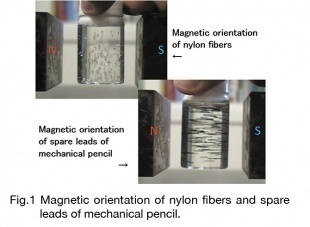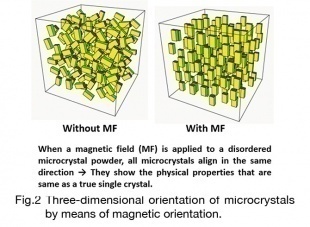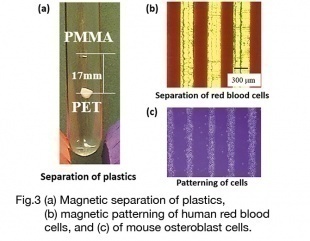- Home
- Faculty Members
- Department of Applied Chemistry and Food Science
- Tsunehisa Kimura
Faculty of Environmental and Information Sciences
Department of Applied Chemistry and Food Science
- Key words
- Magneto-science, magnetic orientation, magnetic separation, pseudo-gravity, physical chemistry, polymer structure, polymer physical properties, polymer processing, rheology, fiber, cellulose, solid state NMR, actuator

Doctor of Engineering / Professor
Tsunehisa Kimura
Education
Kyoto University Faculty of Engineering Department of Industrial Chemistry, Kyoto University Graduate School of Engineering Department of Industrial Chemistry Master's Course, Doctoral Course Completed, Dr of Engineering.
Professional Background
Asahi Chemical Industry, McGill Univ. Postdoc Fellow, Tokyo Metropolitan Univ. Assoc. Prof. / Prof., Kyoto Univ. Prof. / Prof. Emeritus, Magneto-Science Society of Japan Chairman, Society of Polymer Science Japan Award (2002), Cellulose Society of Japan Award (2010)
Consultations, Lectures, and Collaborative Research Themes
Magnetic processing, Polymer processing, Magnetic orientation of organic and inorganic fillers in composites, Magnetic separation of particles, cells and plastics.
Main research themes and their characteristics
「Magnetic Processing of Materials」
The magnetic field is thought to act only on ferromagnets such as iron, but in fact it affects all substances weakly. For example, when a magnetic field is applied to spare leads of mechanical pencil, or nylon fibers, they are oriented in the direction of magnetic field (Fig. 1 (https://www.youtube. com/watch?v=US9NdFy8RC0)). Of course, these materials do not contain ferromagnets. Such phenomena also occur in micro- and nano-sized materials such as carbon fiber (CF) and carbon nanotube (CNT), so it is possible to achieve higher performance of composite materials in which the orientation of CF and is well controled. High heat diffusion sheets that utilize the magnetic orientation of CF have already been put to practical use. In general, magnetic orientation can dramatically improve various physical properties such as electrical conductivity, mechanical strength, and optical properties.
Analyzes of crystal structures are important in the fields of materials and drug studies. The physical properties of the material strongly depend on the crystal structure. Also, since the dissolution rate varies depending on the crystal structure, the effect of the drug depends on the crystal structure. The crystal structure is determined by X-ray diffraction, which requires a large single crystal. However, in many cases only small powdery crystallites are actually obtained. When magnetic field orientation is used, all the crystallites in the powder can be oriented three-dimensionally (Fig. 2), so that a “pseudo-crystal" that is equivalent to a large single crystal can be produced. X-ray crystal structure analysis can be performed by using "pseudo-single crystal". It is known that "pseudo single crystal" is useful for neutron structure analysis and single crystal solid state NMR analysis.
Most substances around us, such as CF and CNT, organic and inorganic crystals, water and plastic, are non-magnetic materials (diamagnetic materials). Diamagnetism is a property that dislikes magnetic fields. Then, the magnetic force acts on the diamagnetic materials and push them away from the magnetic field. When magnetic force and gravity are balanced, a substance can be levitated by a magnet. Using a very strong magnetic field, we can levitate strawberries, tomatoes and even live frogs (https://www.youtube.com/watch?v=A1vyB-O5i6E). Even if you don't go to outer space, you can create pseudo zero gravity on the ground. High quality protein crystals are obtained by crystallization under pseudo zero gravity realized by magnetic field. In addition, since the magnetic force varies depending on the material, it is possible to separate non-magnetic materials. Figure 3a shows the magnetic separation of different plastics (PET, PMMA). There are many fields of application in the biotechnology, such as the separation of red blood cells (Fig. 3b) from whole blood using magnetic force, and the control of cell aggregation (Fig. 3c) that is needed in tissue engineering.



Major academic publications
・T. Kimura, H. Kashiwagi, F. Kimura, S. Horii, K. Takeda, T. Doi, “Orientation loss of microcrystals of DyBa2Cu3Oy in polymer composite during curing of the medium under and external magnetic field”, CrystEngComm, in press.
・M. Yamato and T. Kimura, “Magnetic Processing of Diamagnetic Materials” (Review), Polymers, 12, 1491 (2020).
・F. Kimura and T. Kimura, “Magnetically textured powders—an alternative to single-crystal and powder X-ray diffraction methods” (Highlight article), CrystEngComm, 20, 861 (2018).
・T. Kimura, F. Kimura, Y. Kimura, “Faraday diamagnetism under slowly oscillating magnetic fields”, J. Magn. Magn. Mater., 451, 65 (2018).
・T. Kimura, “Study on the effect of magnetic fields on polymeric materials and its application”, Polymer Journal, 35, 823 (2003).
・T Kimura, M. Yamato, W. Koshimizu, M. Koike, T. Kawai, “Magnetic orientation of polymer fibers in suspension”, Langmuir, 16, 858 (2000).
